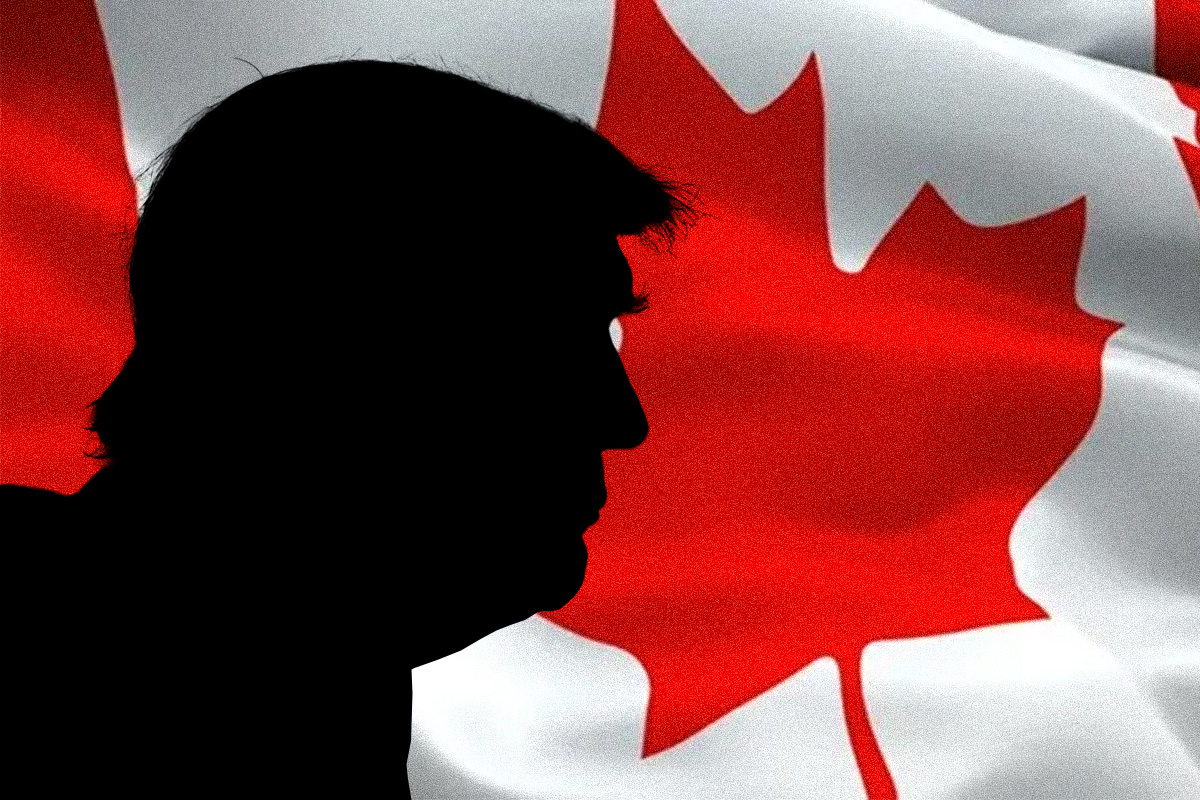
The election of Donald Trump to a second term has sent tremors throughout parliaments and board rooms around the globe. Though the entire world is about to be shaken by the Trump earthquake, Canada, tied as it is to the U.S., stands to be shaken more violently than most.
Even prior to the election of Trump, Canada was beset by a number of “home-grown” problems—from falling productivity, to decaying infrastructure, to a growing drug crisis. His election will accelerate the breakdown of Canada’s already crumbling foundation—with all of the political and social consequences that follow from it.
Trade
Perhaps the greatest impact of a Trump presidency on Canada will be on trade. Trump has already threatened to impose a 25 per cent tariff on all Canadian imports should the Canadian government fail to “secure” its border with the U.S. against “fentanyl and all illegal aliens.”
If implemented, this would have a devastating impact on Canadian exports, 77 per cent of which are destined for the U.S. market—one of the highest rates of export to a single country in the world. By some estimates, this could result in a hit to GDP by five per cent or more, which would thrust Canada into an economic crisis.
Protectionism in the U.S. is not unique to Trump and his Republicans. Obama and Biden had both leveled duties against Canadian softwood lumber during their time in office, resulting in Canadian producers forking over $9 billion since 2017 alone. In relation to China, Biden maintained virtually all of the tariffs first introduced under Trump—even expanding on some.
However, as a fervent isolationist, Trump is more prepared than his predecessors to deploy tariffs on any and all goods, including those originating from U.S. allies like Canada. Trump once described the word tariff as “the most beautiful word in the dictionary.” This is surely not the kind of thing that Canadian exporters want to hear.
Immigration and defence spending
Trump’s pledge to deport all undocumented immigrants in the U.S., estimated at some 11 million people, is another source of anxiety in Ottawa. Whether or not he is able to carry through with his promise, it is expected that many will try to evade deportation by crossing the northern border into Canada. Such a thing already happened once before when Trump removed the protected status for Haitian refugees in 2017.
In response, the Trudeau government rushed to reassure Trump of its “shared interest” in securing the border from refugees, including those heading from Canada into the U.S. The government was joined by the likes of Quebec Premier Francois Legault and the union representing Canada’s border guards, who called for a greater number of personnel to be deployed at the border and over a wider area than they currently patrol. The cost to taxpayers for such measures, of course, was not mentioned.
By comparison, very little has been said by Canada’s elite of the untold cruelty of Trump’s actions, which threatens to break up families and uproot those who have lived and worked in the U.S. for years. The message delivered is as follows: “It is perfectly fine if you wish to deport 11 million people, just please do not send them here.” So much for #WelcomeToCanada.
Canada’s defence spending will also become a flashpoint. Canada is now one of the few NATO countries that does not meet its spending target of two per cent of GDP—a constant source of irritation for the U.S., and Trump in particular.
In recent days, Defence Minister Bill Blair has suggested that Canada should now accelerate its spending on defence. The Business Council of Canada, a club of Canada’s big corporations, has gone further, suggesting that Canada should aim to spend three per cent of GDP on the military to appease Trump.
However, even reaching two per cent would require an estimated $40 billion annually in addition to what Canada already spends on defence. This could only be achieved through painful cuts to things like healthcare, social programs and infrastructure spending. The repercussions of this are so enormous that even Pierre Poilievre has avoided providing his own timeline for reaching the NATO target. However, refusing to do so will likely incur the wrath of Trump, who is prepared to use tariffs and other measures to force Canada into line.
Rock and a hard place
Canada’s elite like to boast of their “special relationship” with the U.S. However, that relationship has always been more special to them than it is to their U.S. counterparts. In truth, Canada is a minor power which lacks the economic or military muscle to disobey its masters in the U.S.
Moreover, Canada is a rapidly declining power, and can no longer even brag of being the U.S.’s largest trading partner (a position assumed by Mexico in 2023). More than ever, when the U.S. says “jump”, Canada says “how high?”
The election of Trump puts Canada’s ruling class between a rock and a hard place. If they resist Trump’s measures, they face untold retribution from the much more powerful U.S. market, resulting in factory closures, layoffs and recession. If they accede to Trump, they will be required to slash tens of billions from much needed services, in order to direct it towards the military and the border. The already dire state of the Canadian economy only magnifies the consequences in either direction. No matter what they do, it will be wrong—and disastrous for millions of people.
However, there is yet another consequence of these developments—their impact on consciousness. The already dire state of life in Canada has left ordinary people with a feeling of rage towards the powers that be. The crisis of capitalism will inevitably produce class struggle, and Trump will provoke an acceleration of this phenomenon.

